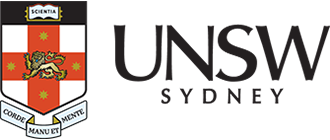
Associate Professor Ann Webber
Diplomate, Binocular Vision, Perception and Paediatric Optometry, American Academy of Optometry, 2015
Fellow, American Academy of Optometry, 2010
GAICD (Board Governance) (Aust Institute of Company Directors, 2022)
Grad Cert Oc Ther, (Queensland University of Technology, Brisbane, Australia, 2010)
PhD, Thesis entitled, The Effect of Amblyopia on Motor and Psychosocial Skills in Children, (Queensland University of Technology, Brisbane, Australia, 2009)
MSc (by Research) Thesis entitled, Ricco's Area and Resolution in the Human Visual System (University of Houston, Texas, USA, 1988)
BAppSc(Optom)(Hons) (Queensland Institute of Technology, Brisbane, Australia 1984)
Associate Professor Ann Webber is a paediatric optometrist, with a strong track record in clinical private and public practice, professional representation, regulation and accreditation, academic teaching, and clinical research. She has career history spanning over 30 years as a practicing optometrist, including establishment of a multi-practitioner optometry practice, and pioneering an optometry clinic within the ophthalmology department at Queensland Children’s Hospital.
Ann’s PhD and clinical research focuses on the impacts of childhood vision disorders and inter-professional collaborative models of eyecare.
In addition to serving three terms on the national government health practitioner regulatory board, the Optometry Board of Australia, Ann has provided leadership to the professional association Qld/NT division of Optometry Australia including two terms as Chair (President) and serves as Associate Editor/Editorial Board member for Clinical & Experimental Optometry.
Internationally renowned, Ann is a Fellow of the American Academy of Optometry (AAO), Editorial Board Member of the AAO journal Optometry and Vision Science and has been awarded Diplomate by the AAO for her globally recognised expertise in paediatric optometry and clinical research. She consults widely, and has contributed as an expert member for the World Health Organisation Development Group for Package of Eye Care interventions (pediatric).
Ann is a highly sought-after clinical educator, known for commitment to evidence based content and engaging communication style.
International and National Advisory / Consultant Roles / Boards & Committees
World Health Organization: Expert Member of Development Group for Package of Eye Care Interventions (Paediatric) (2021)
Professional Service Review Panel (2021- Present)
Optometry Board of Australia, Practitioner Board Member (National Regulation and Accreditation Scheme) (2015 – 2022)
Optometry Board of Australia Registration and Notification Committee Member, (2010-2019)
Associate Editor, Clinical and Experimental Optometry (2022 - Present)
Editorial Board Member, Optometry & Vision Science, (2016 – Present)
Queensland Children’s Eye Health Strategy Committee Member, CHQ HHS (2015 – 2017)
Examination and Accreditation in Optometry Assessment Team Member, Optometry Council of Australia and New Zealand (2000 - Present)
State Regulation Board Appointment, Optometry Registration Board of Queensland 2001 – 2010(Deputy Chair 2009-2010)
Queensland Government Appointment to Optometrists Panel of Assessors (2000 – Present)
Optometry Australia State Division Board, (OQNT) (Chair 1999-2001) 1993 – 2002
- Publications
- Media
- Grants
- Awards
- Research Activities
- Engagement
- Teaching and Supervision
Diplomate AAO, Binocular Vision, Perception and Paediatric Optometry Section Award for Distinction in Clinical Excellence, American Academy of Optometry
Hamlyn R Brier Clinical Optometry Award Optometry Qld/NT - Recognition for Outstanding Clinical Achievement
Fellow, American Academy of Optometry
Finalist Clinical Researcher Award, Qld Health & Medical Research Awards (ASMR)
ARVO Foundation Travel Grant Recipient
QUT Postgraduate Research Award
Outstanding Contribution QUT Career Mentor Scheme
Throughout my career I have pursued my passion for research that focuses on the functional impact of childhood vision disorders and the delivery of paediatric eye care in both public and private practice settings. This has led to highly valued collaborative local and international clinical and research relationships built with pediatric optometrists and ophthalmologists.
I have published extensively in the impact of childhood vision disorders and on interprofessional collaborative models of care service delivery. (https://orcid.org/0000-0003-3935-3615)
1.HOW AMBLYOPIA AFFECTS FUNCTION
I have a strong interest in researching the functional disadvantages associated with amblyopia, and I have conducted research on innovative treatment modalities for children with this condition. My previous work focused on examining the impact of amblyopia on fine motor and psychosocial skills in children, while my most recent work has demonstrated that treated children regain competence in fine motor skills.
2. COLLABORATIVE MODELS OF PAEDIATRIC EYECARE
Innovative models of inter-professional collaborative eyecare involves optometrists, ophthalmologists, and orthoptists working together to provide comprehensive eyecare for children in Australia. Interprofessional collaborative care in eye care has been shown to improve patient outcomes and satisfaction, reduce healthcare costs, and enhance communication and collaboration between healthcare professionals. This model of care is becoming increasingly important as the demand for eyecare services continues to grow, with research required to understand the barriers and enablers to novel eyecare delivery.
3. ACCOMMODATION AND BINOCULAR FUNCTION
One of my current research interests is the evaluation of accommodation in individuals with hyperopia and/or amblyopia. This involves calculating accommodation demands with different hyperopic corrective lens powers, assessing the accuracy of the accommodation response with spectacle lenses of different optical designs compared to contact lenses, and comparing the accommodative response between normally sighted and amblyopic eyes. By more precisely determining the role of accommodation in amblyopia development and treatment, this research has potential commercial application for spectacle lens design to optimize binocular correction of refractive error.
Other research includes evaluating new stereopsis tests that measure threshold stereoacuity and quantify the depth of suppression, in collaboration with Prof Robert Hess from McGill University. By manipulating the elements presented to each eye, we aim to determine the relationship between stereoacuity, degree of suppression, and inter-ocular visual acuity difference. This research will help us better understand the impact of inducing or correcting contrast and/or accommodation imbalance on binocular function in patients with abnormal binocular vision development.
